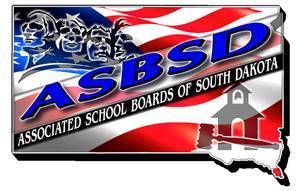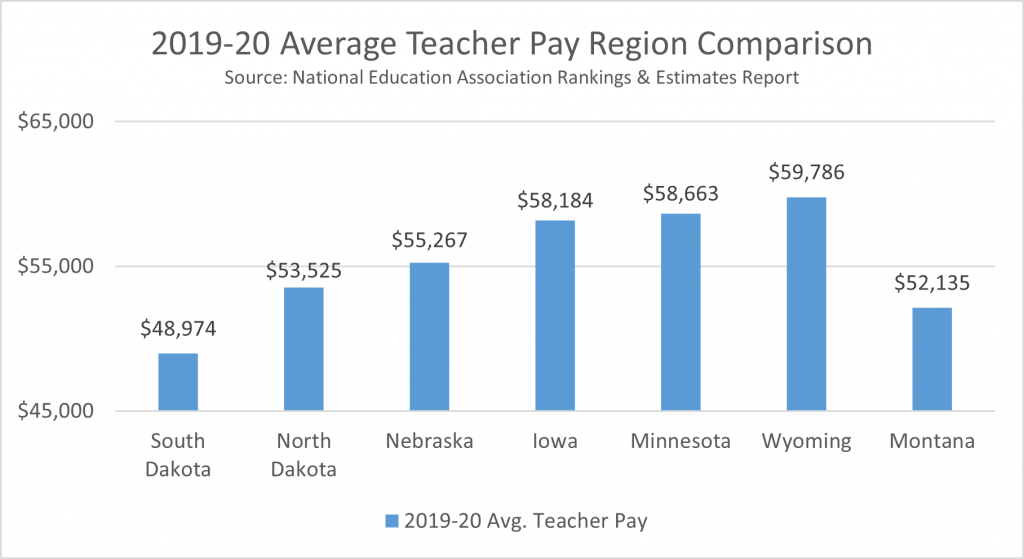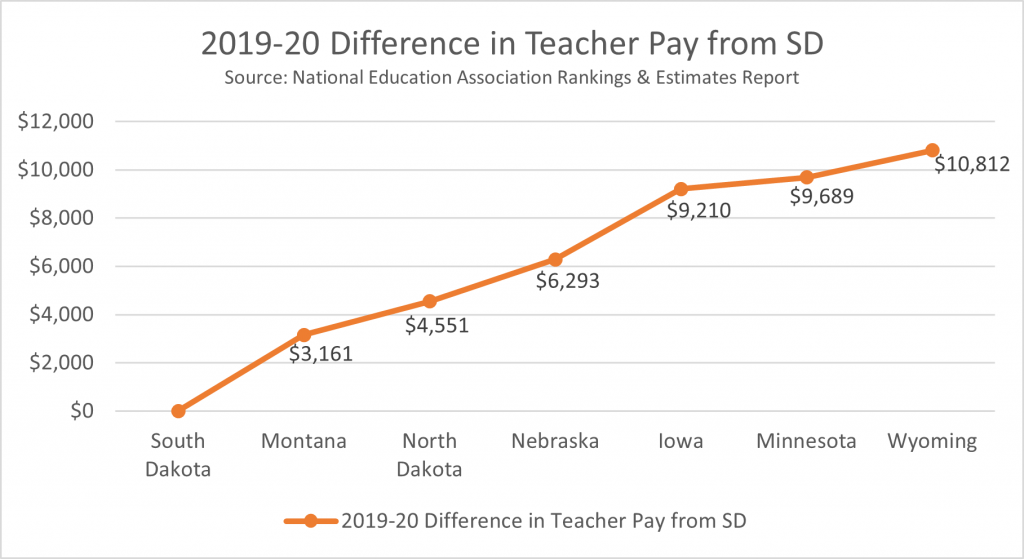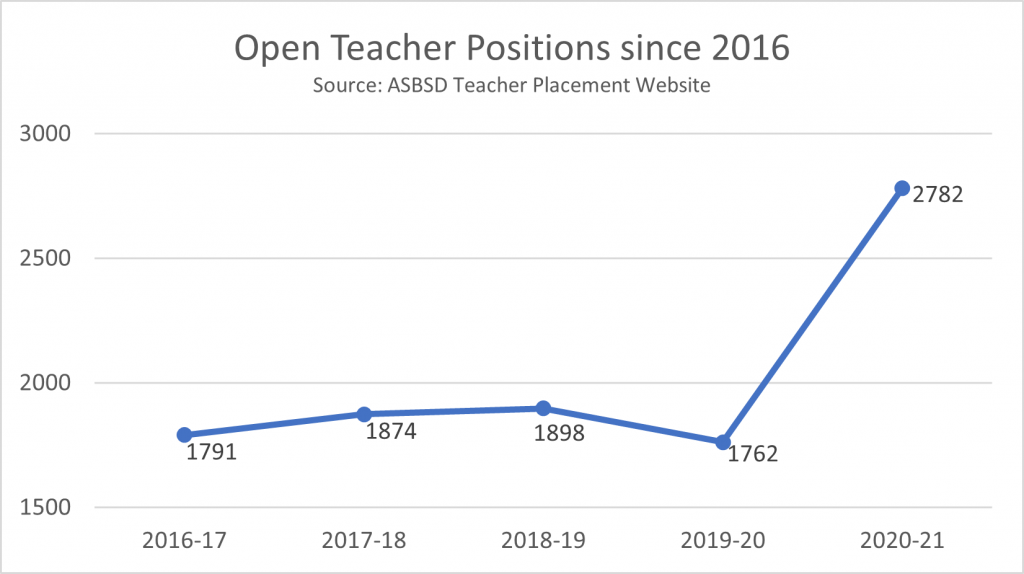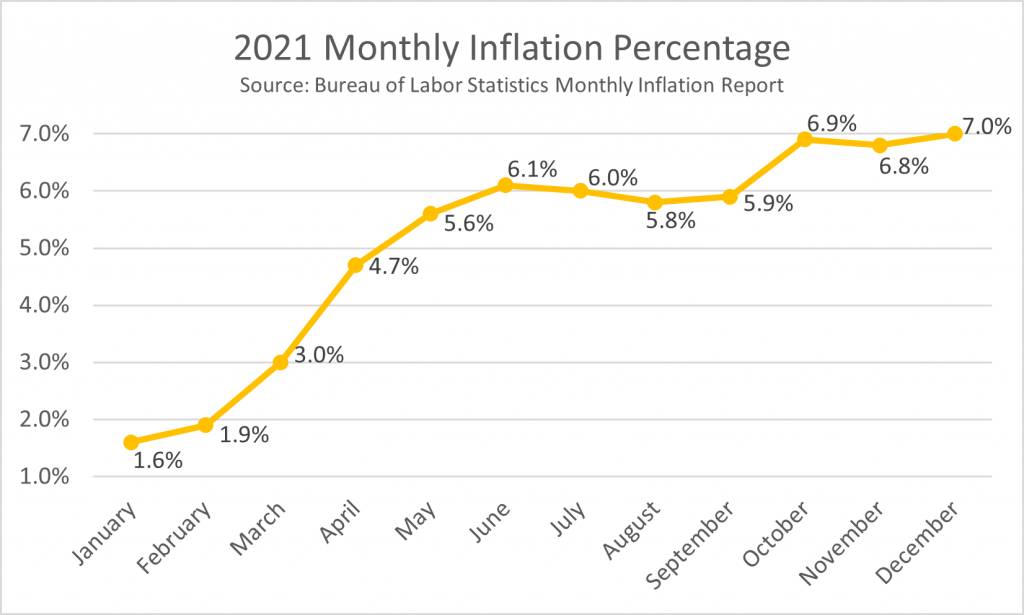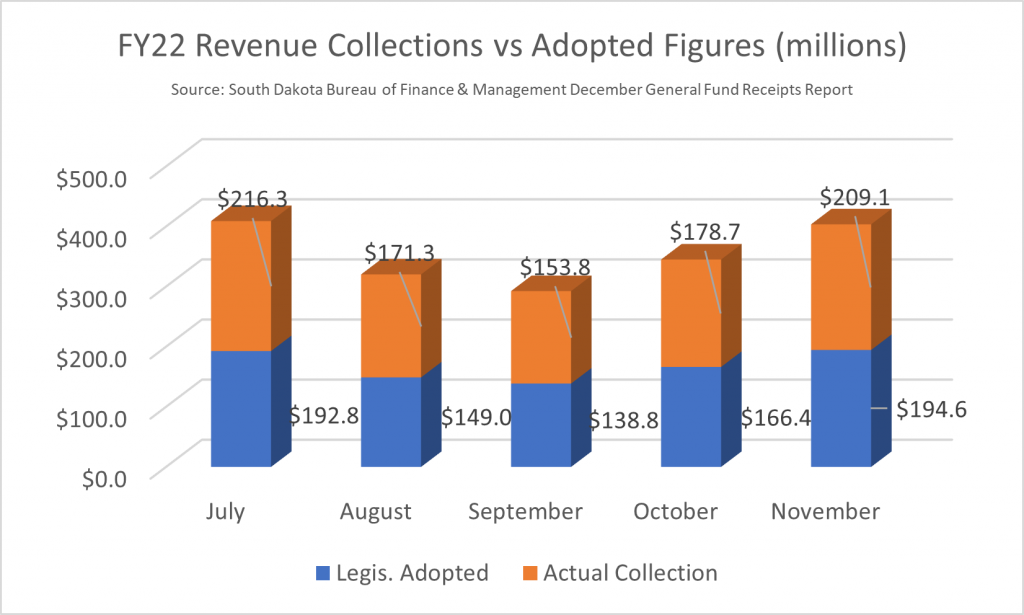Teacher Pay Behind Neighbors, Rank Falling Nationally
The average teacher salaries in South Dakota continue to lag far behind those of neighboring states with South Dakota the only state of the group of seven not top $50,000 in average teacher pay in 2019-20.
The closest regional competitor remains more than $3,000 ahead of South Dakota and both sides of the river’s border states offer more than $9,000 average teacher pay.
In addition, while having climbed to 47th in the national teacher salary rankings in 2017-18, South Dakota has fallen back to 50th, just one spot higher than last in the nation, a spot SD sat in just five years ago.
| National Average Teach Pay Rankings
Source: National Education Association Rankings & Estimates Report |
||||
| 2016 | 2017 | 2018 | 2019 | 2020 |
| 51st | 48th | 47th | 48th | 50th |
Growing Teacher Shortage
The Teacher Compensation Review Board, which met 2021 to review teacher pay in South Dakota, completed its report, noting in it, “the teacher shortage in South Dakota is challenging for many districts and is projected to increase” and adding, “Teacher pay is one of several important factors to address this shortage.”
These statements are supported by data from the ASBSD Teacher Placement Center, which tracks position openings in school districts, as since the sales tax increase to fund the increase in teacher pay openings have risen each year, but one, including a steep increase last year.
Projected Enrollment Uptick Means More Teachers Needed
The Teacher Compensation Review Board’s report noted “that, while the number of certified teachers is increasing, the pipeline to fill school district positions is smaller than ideal” which can be attributed, based on the data, to the rising number of “unfilled vacancies” and “to the lack of applicants” that school “district officials have frequently spoken to.”
The report also pointed out “student enrollment in public schools is expected to increase” in the coming years and “if the current teacher workforce and student population trends hold true, the student-to-teacher ratio could rise to 20:1 by 2025, above the target ratio of 14:1 in South Dakota.”
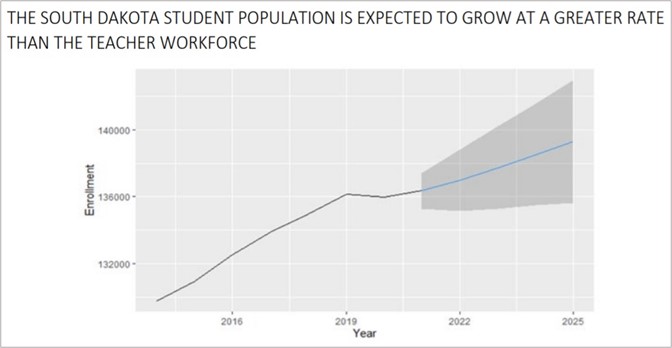 Source: Teacher Compensation Review Board Report
Source: Teacher Compensation Review Board Report
Steep Increase In Inflation
Inflation in the United States has seen a steep increase in 2021 – growing by more than 5 percent from the January figure to December’s percentage.
The rise in inflation is eroding the purchasing power of schools, leaving them with less money to pay for goods and services, as well as teacher and support staff salaries, without a raise in state aid above the year’s average inflation percentage.
Support Staff Wages Requiring An Increase
With rising inflation comes rising costs for workers which in turn is putting a strain on school budgets as they are having to shift more money toward support staff wages to compete for workers and that will mean less money for teacher salaries.
The Teacher Compensation Review Board report noted: “Increased support staff costs will erode the ability for school boards to increase teacher salaries.”
State Revenue Collections Higher Than Projected
The state revenue collections through the first five months of Fiscal Year 2022 show signs that money is there in the state coffers to support an increase in state aid high enough to support the costs of salaries for teachers and support staff.
2022 Fiscal Year total revenue collections currently sit $116.1 million higher than the legislature’s adopted projections. In addition, South Dakota finished Fiscal Year 2021 with a budget surplus of $85.9 million, bringing the combined totals to $202 million in unbudgeted funds.
State Constitutional Obligation To Fund Public Schools
Article VIII, Section 1 of the South Dakota Constitution states: “The stability of a republican form of government depending on the morality and intelligence of the people, it shall be the duty of the Legislature to establish and maintain a general and uniform system of public schools wherein tuition shall be without charge, and equally open to all; and to adopt all suitable means to secure to the people the advantages and opportunities of education”.
Public schools are the only institution of government required to be funded by the state Legislature.
